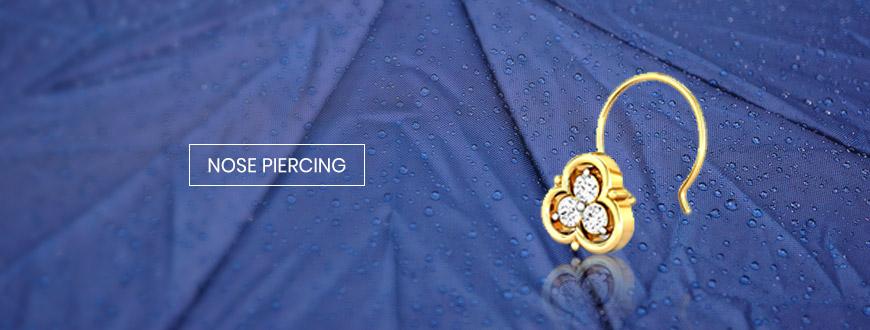Kalyan Wiki

Nose Piercing
Nose piercing is a kind of body piercing done on the skin or cartilage of the nose area usually, intending to wear jewellery. Although the culture of nose piercing originated in the Middle East and was brought to India by the Mughals, a lot of women across the world have embraced this tradition and improvised it to their style.
Nose piercings are of several types. The most common traditional type of nose piercing is Nostril piercing, i.e. piercing done on either side of the nose. High Nostril piercing is followed by High Nostril in terms of popularity(where the piercing is done on the higher nostril area) and Septum piercing (where the piercing is done between the two nostrils). Some of the other common types of piercing that have gained recognition in contemporary times are Bridge piercing (where the piercing is done on the bridge area of the nose), Vertical Tip piercing (where the piercing is done above and under the tip of the nose), Septril piercing (where the piercing is done in between the skin area amidst the nostrils and just below the tip) and Nasallang piercing (which is a tri-nasal piercing, done connecting the lower nostrils and septum).
In Indian tradition, nose piercings hold several significance. According to Hindu mythology, nose piercing is believed to be a way of honouring Goddess Parvati; the Goddess of Marriage. Hence, piercings that are done for marriages are considered highly auspicious; in fact, nose rings have become an integral part of traditional bridal jewellery.
In a diverse country like India, nose ornaments come in different shapes, sizes and designs, all to complement the different nose piercing practices.‘Naths’ which are traditional nose pins woven with different stones are native to most Indian states. The ‘Shikarpuri Nath’ forma part of a famous Punjabi jewel collection and consists of various sized hoops strung with motifs. They mostly come with a connecting chain as well and are, of course, sparkling in texture.‘Nathni’ is a lighter version of the Shikarpuri Nath, and comes with a big golden hoop along with a long delicate chain with little or no gemstones. This is popular among the women of Rajasthan and Gujarat.
‘Nathuri’ is another common Nath worn by Rajasthani brides. These are made of gold or silver with a single or just a few precious stones.The women of Uttarakhand wear ‘Nathuli’ which are basically large rings made of gold and adorned with pearls. Other famous types of Naths are from Maharashtra. While there are many unique designs in the Maharashtrian Nath collection, ‘Brahmani Naths’ which are rings adorned with emeralds and pearls are the most sought after ones.
The majority of the women populace in North India have embraced nose ornaments in three forms; ‘Laung’ (a small clove shaped stud made of gold and precious gemstones), ‘Latkan’ (a simple metallic nose stud or nose pin with an ornate chain that connects to the hair) and ‘Bullaq’ (mostly a pendant shaped ring to complement the septum piercing).
In the Southern states, on the other hand, nose jewels took the form of ‘Mukhuttis’. They are simple nose studs in lotus or swan design with polished stones. Some brides wear Mukhuttis on both nostrils too in South India. A different version of bullaq called ‘Pullaku’ is also quite common especially in Tamil Nadu, to accompany septum piercing.
The process of nose piercing may be a little painful in the initial settling period for those with sensitive nose tissue, while for some, nose piercing may not be painful at all. You can also get fabulous nose rings that avoid the need for piercing. These can be clipped onto the nostrils.







